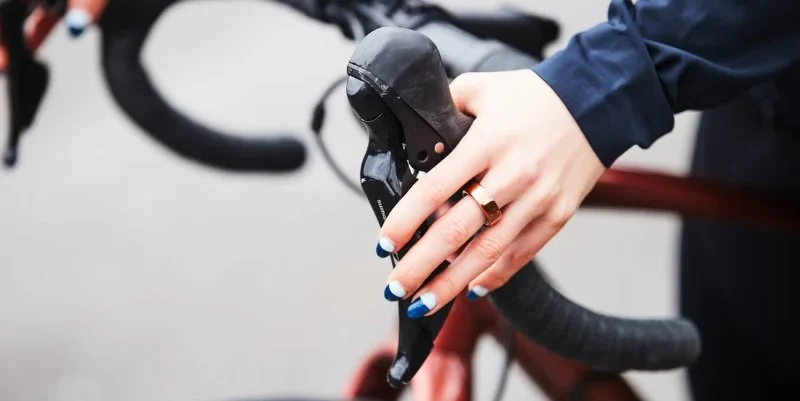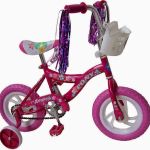
How to Deal with Sore Hands and Numb Fingers on Long Rides
- 1. Introduction: Understanding the Causes of Sore Hands and Numb Fingers
- 2. Prevention Tips: How to Avoid Hand and Finger Discomfort
- 3. Exercises and Stretches to Relieve Hand Fatigue
- 4. Adjustments to Your Bike Setup to Reduce Discomfort
- 5. Essential Gear to Enhance Comfort on Long Rides
- 6. Real-Life Case Studies and Solutions
1. Introduction: Understanding the Causes of Sore Hands and Numb Fingers
Riding a bike for extended periods can lead to discomfort in the hands and fingers, a common issue for many cyclists. Whether you're a recreational rider or an avid cyclist, sore hands and numb fingers can hinder your ride. Understanding why this happens is key to addressing the problem. The main causes typically include poor grip, pressure on nerves, incorrect bike posture, or inadequate circulation. Let's explore how you can deal with these issues effectively and ensure a smoother, more comfortable cycling experience.
2. Prevention Tips: How to Avoid Hand and Finger Discomfort
Prevention is always better than cure, and there are a few practices that can help you avoid sore hands and numb fingers before they even begin:
1. Maintain Proper Riding Posture
Your posture while riding plays a significant role in preventing hand fatigue. Keep your elbows slightly bent, which allows better circulation to your hands. Avoid locking your elbows and make sure you're not leaning too far forward or backward. Proper weight distribution will help relieve pressure from your hands and wrists.
2. Adjust Your Grip
A tight grip on the handlebars is a common culprit in causing numbness and discomfort. Try to keep your grip relaxed but secure. If you find yourself gripping too tightly, take short breaks and shake out your hands to restore circulation.
3. Take Regular Breaks
On long rides, it’s important to take breaks every 30 minutes to an hour. This gives your hands time to recover and prevents numbness from setting in. Use this time to stretch your hands, shake them out, and restore blood flow.
3. Exercises and Stretches to Relieve Hand Fatigue
Incorporating specific exercises and stretches can help improve circulation, relieve tension, and keep your hands and fingers from going numb during long rides. Here are some simple exercises to try:
1. Hand Squeezes
Gently squeeze a soft stress ball or a piece of cloth in your hand for a few seconds, then release. Repeat this several times to improve blood flow and strengthen your hand muscles.
2. Finger Extensions
After cycling, extend each finger one by one and hold for a few seconds. This exercise stretches your fingers and relieves any built-up tension from gripping the handlebars.
3. Wrist Rotations
Hold your hands out in front of you and rotate your wrists in circles, both clockwise and counterclockwise. This will help prevent stiffness and improve flexibility in the wrists and hands.
4. Adjustments to Your Bike Setup to Reduce Discomfort
Making some simple adjustments to your bike can go a long way in reducing hand and finger discomfort. Here are a few adjustments to consider:
1. Handlebar Height and Position
Ensure your handlebars are at the right height for your body. A handlebar that’s too low can put excessive pressure on your hands and wrists. Adjusting the handlebars to a more comfortable height can help distribute weight more evenly.
2. Grip Type and Padding
Consider upgrading your grips. Soft, ergonomic grips are designed to reduce pressure and improve comfort. Look for grips that offer additional padding or shock absorption, especially if you’re going on long rides.
3. Saddle Position
Adjusting the saddle position ensures that your body is aligned properly while cycling. A misaligned saddle can affect your posture and increase strain on your hands.
5. Essential Gear to Enhance Comfort on Long Rides
In addition to proper posture and bike setup, using the right gear can make a huge difference in the comfort of your ride. Here are some essential items to consider:
1. Cycling Gloves
Invest in a high-quality pair of cycling gloves. These provide extra padding to absorb vibrations and help alleviate pressure on your hands. Gloves also improve grip and prevent blisters.
2. Padded Bar Tape
If you ride a road bike, padded bar tape can significantly reduce hand fatigue. It provides extra cushioning on the handlebars and absorbs shock from bumpy roads.
3. Wrist Supports
For riders who experience wrist pain or numbness, wrist supports or braces can provide additional support and help reduce strain on the wrists during long rides.
6. Real-Life Case Studies and Solutions
Here are a couple of real-life examples of cyclists who have dealt with sore hands and numb fingers on long rides:
Case Study 1: The Commuter Cyclist
One commuter cyclist, John, found himself constantly battling hand numbness during his 45-minute ride to work. After adjusting his handlebars, adding ergonomic grips, and using cycling gloves, he noticed a significant reduction in discomfort. He now takes breaks during longer rides to shake out his hands and practices hand stretches during his commute.
Case Study 2: The Long-Distance Rider
Sarah, a long-distance rider, struggled with sore hands and fingers during multi-day rides. She found that adjusting her bike fit and using padded bar tape on her road bike made a huge difference in her comfort. She also started using wrist supports to alleviate the strain on her hands during long rides, and this made a big improvement in her cycling experience.
By following these tips and making the right adjustments to your riding technique and equipment, you can prevent hand soreness and numb fingers, ensuring a more enjoyable and comfortable cycling experience.







 Billet BMX5.0 (2 reviews)
Billet BMX5.0 (2 reviews) Far East Children Bicycle Factory1.0 (1 reviews)
Far East Children Bicycle Factory1.0 (1 reviews) Archer Motorsports, Inc.4.0 (8 reviews)
Archer Motorsports, Inc.4.0 (8 reviews) YEP Bike Works4.0 (55 reviews)
YEP Bike Works4.0 (55 reviews) Gorham Bike & Ski4.0 (498 reviews)
Gorham Bike & Ski4.0 (498 reviews) Alchemy Bikes4.0 (37 reviews)
Alchemy Bikes4.0 (37 reviews) How to Teach Kids to Ride a Bike: A Step-by-Step Guide for Parents
How to Teach Kids to Ride a Bike: A Step-by-Step Guide for Parents Tips for Riding on Busy City Streets: Smart Strategies for Urban Cyclists
Tips for Riding on Busy City Streets: Smart Strategies for Urban Cyclists Best US National Parks for Mountain Biking: Ride Epic Trails Across America
Best US National Parks for Mountain Biking: Ride Epic Trails Across America Best Aero Helmets for Time Trials and Racing
Best Aero Helmets for Time Trials and Racing How to Clean and Lubricate Your Bike Chain Like a Pro
How to Clean and Lubricate Your Bike Chain Like a Pro 10 Must-Have Items for Long-Distance Cycling Trips
10 Must-Have Items for Long-Distance Cycling Trips